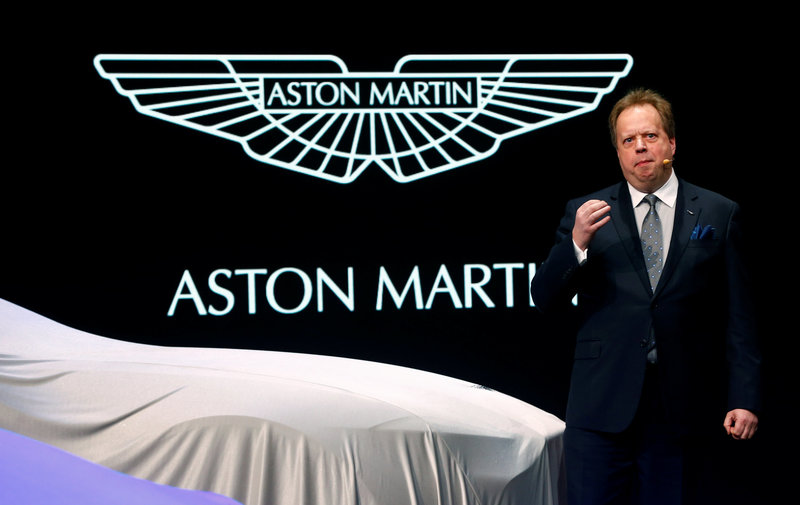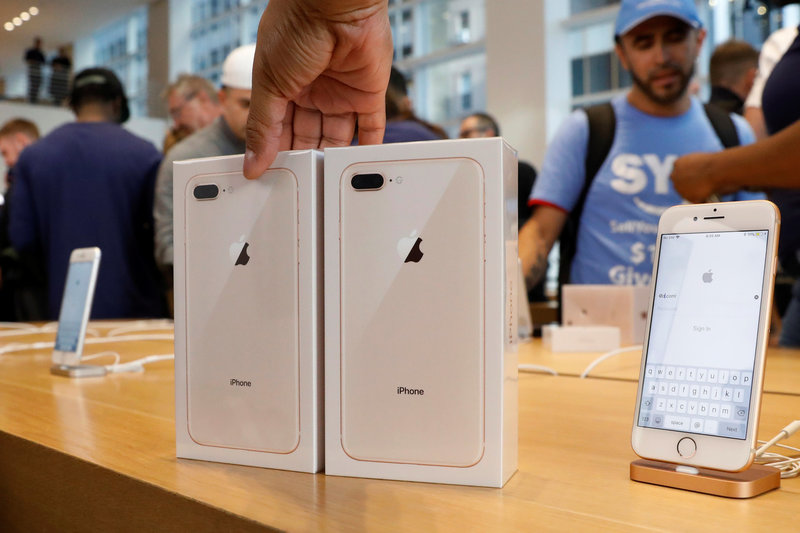
FILE PHOTO: Aston Martin Lagonda Ltd. CEO Andrew Palmer addresses media during the first press day ahead of the 85th International Motor Show in Geneva March 3, 2015. REUTERS/Arnd Wiegmann/File Photo
October 12, 2017
By Joseph White
DETROIT (Reuters) – The arrival of Aston Martin’s DBX sport utility vehicle in 2019 could help more than double sales of the British sports car maker by early next decade, its chief executive told Reuters.
The company’s entry into the fast-growing super-premium SUV market “absolutely changes the business,” Andy Palmer said in an interview in the United States.
It could boost sales to as many as 12,000 vehicles a year by early in the next decade, more than double the roughly 5,000 sports cars the company expects to sell globally this year, he forecast. Aston Martin’s previous peak sales year was 2007, when it sold 7,300 cars just before the financial crisis.
Palmer said U.S. sales could reach about 1,300 cars this year, propelled by the new DB11 model. “I am not claiming success,” he said. Aston’s goal is to get over 2,000 cars a year in the United States.
The DBX will be a four-door SUV designed to compete with models such as Volkswagen AG’s Bentley Bentayga, a $229,000-and-up vehicle billed by its maker as “the fastest SUV ever built”.
The DBX’s design “is complete”, Palmer said, and the factory should be building prototypes by the end of 2018.
Aston Martin, the preferred drive of fictional British spy James Bond, is late to join the SUV mania gripping the global luxury car business.
The financial incentives are clear. In the United States, SUVs accounted for nearly 40 percent of total U.S. vehicle sales in 2016, up from 32.6 percent in 2014, and super-premium models are one of the fastest growing segments.
BREXIT
Privately-owned Aston Martin reported 94.6 million pounds ($125.1 million) of cash from operations during the first half of 2017, after years of losses. Under Palmer, a former Nissan Motor Co executive, Aston Martin has restructured and issued 550 million pounds in debt securities that are due in 2022.
That year is also near the end of Palmer’s restructuring plan. By then, Aston Martin – with the DBX SUV and the relaunch of the Lagonda brand – will have a profile similar to Ferrari, Palmer said, adding: “Ferrari is a $15 billion company.”
Decisions about a public offering or a sale of the company are up to the Kuwaiti and Italian investors who control it, Palmer said. “One assumes they will want an exit.”
Britain’s departure from the European Union could make Aston Martin’s road tougher if the two sides fail to maintain favorable trade rules, Palmer said. Non-tariff barriers that could slow deliveries in Europe “are my first concern,” he said.
“Our brand is largely rooted in the UK so it’s a tough call” to consider factories elsewhere, he added. A weaker British pound and the ability of Aston’s client base to absorb the costs of tariffs could offset Brexit costs, he said.
In the meantime, Aston Martin faces the same pressures to develop cleaner petroleum fueled engines and electric cars as better funded rivals.
Aston will eventually offer hybrid options on all its models, and will build a limited run of 155 RapidE electric cars in 2019 that will serve as a test fleet for developing a future generation of electric cars, Palmer said.
“The idea that every vehicle on the road will be electric in 2040 isn’t going to happen,” he said.
Aston’s more valuable play in the electric vehicle field could be as a consultant for electric car startups that don’t know how to build lightweight vehicles such as Aston’s aluminum- bodied sports cars.
The company recently established an engineering consulting arm. “It’s starting to get its first contracts,” Palmer said.
(Reporting by Joe White; Editing by Mark Potter)

